Today Current Affairs: 22nd July 2022 for UPSC IAS exams, State PSC exams, SSC CGL, State SSC, RRB, Railways, Banking Exam & IBPS, etc
Table of Contents
Landlord Port Model:
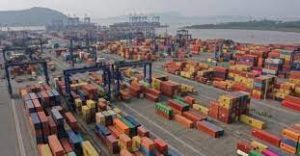
Jawaharlal Nehru Port (JNP) has become the first major 100% landlord port in India, having all berths being operated on the PPP model.
- In this model, the publicly governed port authority (owner) acts as a regulatory body and as a landlord while private companies carry out all other port operations. In return, the landlord gets a share of the revenue from the private entity.
- Previously, the government proposed to set up a major port at Vadhavan (India’s 13th major port) near Dahanu in Maharashtra based on the landlord model.
- JNP (Mumbai) is one of the leading container ports in the country and is ranked 26th among the top 100 global ports (as per Lloyds List Top 100 Ports 2021 Report).
- JNPCT(Jawaharlal Nehru Port Trust) is presently handling 9000 TEUs capacity vessels and with the up-gradation, it can handle 12200 TEUs capacity vessels.
- Currently, India has 12 major ports– Deendayal (erstwhile Kandla), Mumbai, JNPT, Mormugao, New Mangalore, Cochin, Chennai, Kamarajar (earlier Ennore), VO Chidambaranar, Visakhapatnam, Paradip and Kolkata (including Haldia).
Abort Mission For Gaganyaan:
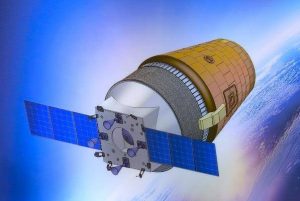
Indian Space Research Organisation (ISRO) will conduct two unmanned ‘Abort Mission’ in 2022 to ensure crew safety during the Gaganyaan mission.
- This is a part of ISRO’s roadmap for the country’s first manned flight to space.
- The first test vehicle for this purpose will be launched in September 2021.
- The abort missions are meant to test the systems that can help the crew escape from the spacecraft mid-flight in case of a failure.
- ISRO already conducted a pad abort test — where the crew can escape from the spacecraft in case of an emergency at the launch pad — in 2018.
- For the abort missions, ISRO has developed test vehicles that can send the systems up to a certain height, simulate failure, and then check the escape system.
- Escape system is designed with five “quick-acting” solid fuel motors with a high burn rate propulsion system, and fins to maintain stability.
- The crew escape system will separate from the crew module by firing explosive nuts.
- ISRO’s focus is on perfecting the system that will launch and land Indians on missions to space and to protect the astronauts if the mission fails.
Gaganyaan Mission:
- Gaganyaan is a mission by the Indian Space Research Organisation (ISRO).
- Under the Gaganyaan schedule (to be launched in 2023):
- Three flights will be sent into orbit.
- There will be two unmanned flights and one human spaceflight.
- The Gaganyaan system module, called the Orbital Module will have three Indian astronauts, including a woman.
- It will circle Earth at a low-earth-orbit at an altitude of 300-400 km from earth for 5-7 days.
- GSLV Mk III, also called the LVM-3 (Launch Vehicle Mark-3,) the three-stage heavy lift launch vehicle, will be used to launch Gaganyaan as it has the necessary payload capability.
World Report On The Health Of Refugees And Migrants : WHO
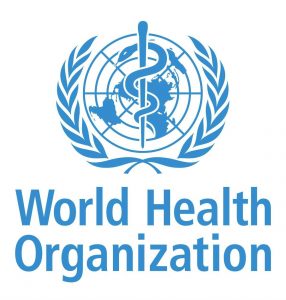
According to a report released recently by the World Health Organisation titled ‘’World report on the health of refugees and migrants’’, India received USD 87 billion in remittances in 2021.
- The report is the first to offer a global review of health and migration and calls for urgent and concerted action to support refugees and migrants across the world to access health care services that are sensitive to their needs.
Findings:
Migration:
- It states that ‘Globally, about one in eight people are migrants.” (Total 1 billion are Migrants)
- From 1990 to 2020: The total number of international migrants increased from 153 million to 281 million.
- About 48% of international migrants are women and some 36 million are children.
- As of 2020, Europe and North America hosted the greatest number of international migrants, followed by northern Africa and western Asia.
- More than half of newly recognized refugees during the first half of 2021 were from five countries:
- Central African Republic
- South Sudan
- Syrian Arab Republic
- Afghanistan
- Nigeria
Remittance:
- In 2021 the top five remittance recipients (among low- and middle-income countries) in current US dollars were:
- India: 83 billion
- India’s remittances rose by 4.8% in 2021. (Remittance in 2020 at USD 83 billion)
- China: 53 billion
- Mexico: 53 billion
- Philippines: 36 billion
- Egypt: 33 billion
- As a share of Gross Domestic Product (GDP), the top five remittance recipients in 2021 were smaller economies:
- Tonga: 44%
- Lebanon: 35%
- Kyrgyzstan: 30%
- Tajikistan: 28%
- Honduras: 27%
- In most other areas, remittances have also recovered strongly, registering growth of 5–10% in Europe and Central Asia, the Middle East and northern Africa, Southern Asia and sub-Saharan Africa.
- But at a slower pace of 1.4% in Eastern Asia and the Pacific, excluding China.
- A remittance is money sent to another party, usually one in another country.
- The sender is typically an immigrant and the recipient a relative back home.
Committee On MSP & Natural Farming:
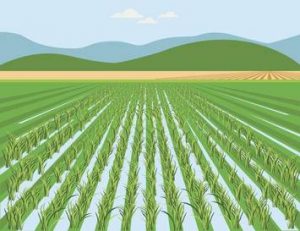
The Union Government set up a committee headed by the former Union Agricultural secretary to further look into the issues of Minimum Support Price (MSP) and Natural Farming.
- It has been constituted as a follow-up to an announcement by Prime Minister when he had declared the government’s intention to withdraw the three farm laws.
- The protesting farmers had demanded a legal guarantee on MSP, based on Swaminathan Commission’s ‘C2+50% formula’.
- The Swaminathan Commission Report states that the government should raise the MSP to at least 50% more than the weighted average cost of production. It is also known as the C2+ 50% formula.
- It includes the imputed cost of capital and the rent on the land (called ‘C2’) to give farmers 50% returns.
- This was in addition to their demand for repeal of the three farm laws — Farmers Produce Trade and Commerce (Promotion and Facilitation) Act, 2020; Farmers (Empowerment and Protection) Agreement on Price Assurance and Farm Services Act, 2020; and the Essential Commodities (Amendment) Act, 2020.
- It would discuss approaches to develop the Agricultural Marketing System in accordance with the changing needs of the country in order to ensure higher value to farmers through remunerative prices for their produce by leveraging domestic output and export.
- Natural Farming: It would give suggestions for programmes and schemes for value chain development, protocol validation, and research for future needs,
- Also, push support for area expansion under the Indian Natural Farming System through publicity and through involvement and contribution of farmer organisations.
- Crop diversification: It will investigate, and map present cropping patterns of agro-ecological zones in producer and consumer states.
Promote a diversification policy approach to varying the cropping pattern according to the changing needs of the country.
Synthetic Biology:

As per study by USA, due to climate change one-third of all animal and plant species on the planet could face extinction by 2070.
- Environmentalists consider synthetic biology or ‘synbio’ as a potential tool to preserve biodiversity and restore the natural ecosystem.
- The term ‘synthetic biology’ was first used by Barbara Hobomin in 1980, to describe bacteria that had been genetically engineered using recombinant DNA technology.
- Synthetic biology refers to the science of using genetic sequencing, editing, and modification to create unnatural organisms or organic molecules that can function in living systems.
- Synthetic biology enables scientists to design and synthesise new sequences of DNA from scratch.
- The term was used to describe the synthesis of unnatural organic molecules that function in living systems.
- More broadly in this sense, the term has been used with reference to efforts to ‘redesign life’.
- This technology could be helpful in use for sustainable production of bioenergy, drugs, and food.
- Interesting application of synbio are its usage for the capture of carbon dioxide from industrial emissions.
- Further, the captured gas is then recycled to fuels using microorganisms. Potentially, such transformations comprise benefits ranging from protecting threatened species to providing synthetic alternatives to wildlife products.
- This technology would help us resolve some of society’s most imperative problems from infectious disease to drug development to sustainability.
- Its helping scientists find the right answers, faster and in a more efficient way and driving them towards the path of innovation.
Euro And The U.S. Dollar Reached Parity:

The Euro and the U.S. dollar reached parity, meaning one dollar could buy one euro in the foreign exchange market.
- Since the beginning of the year, the euro has lost about 12% against the U.S. dollar and it is expected to lose more value going forward.
- The price of any currency in a market economy is determined by supply and demand.
- The supply of a country’s currency in the foreign exchange market is determined by various factors such as central bank policy and the local demand for imports and foreign assets.
- The demand for a country’s currency, on the other hand, is determined by factors such as central bank policy and the foreign demand for exports and domestic assets.
- Divergence in the monetary policies of the U.S. Federal Reserve and the European Central Bank is the primary reason behind the euro’s significant depreciation against the U.S. dollar.
- Inflation in the U.S. hit a four-decade high of 9.1% in June 2022 while inflation in the Eurozone reached its highest-ever level of 8.6% during the same month.
- The U.S. Federal Reserve responded to the rising prices by raising the interest rates this year in order to slow down U.S. money supply growth.
- The ECB, however, has been far less aggressive in tightening policy even though the inflation rate is as high as 22% in some European countries.’
- This has caused the value of the euro to slide against the dollar as currency traders witness, or at least expect, the supply of euros in the market rising relative to the supply of dollars.
- The value of the euro has been affected by the uncertainty in energy supplies in the wake of Russia’s invasion of Ukraine and the ensuing actions against Russia.
- Europe now has to shell out more euros to import limited energy supplies, which in turn has adversely affected the value of the euro against the U.S. dollar.
Taranga Hill-Ambaji- Abu Road New Rail Line:

The Cabinet Committee on Economic Affairs approved the construction of Taranga Hill-Ambaji- Abu Road new rail line.
Key Highlights of this Project:
- The total length of the new rail line will be 116.65 kms.
- The project will be completed by 2026-27, it will generate direct employment during construction for about 40 lakh man days.
- The route will go via Rajasthan’s Sirohi district, as well as Gujarat’s Banaskantha and Mahesana districts.
- It would enhance connectivity and improve mobility leading to overall socio-economic development of the region.
- As it connects the important pilgrimage sites and hence, it will facilitate easy travel to millions of devotees.
- It would also facilitate faster movement of agricultural and local goods, further enhance connectivity between Gujarat and Rajasthan.
- It would provide alternative route for existing Ahmedabad-Abu Road railway line.
JJM Hit 51% Completion Of The Project:
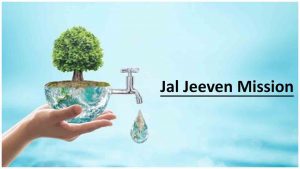
JJM hit 51% completion of the project. From less than 17% of households with a running tap water connection, JJM has enabled reach to more than 34% now in less than 3 years.
- About 1.4 million soak beds have been constructed in schools and anganwadis to use recycled water in tap connections.
- Only after the formal resolution by the gram panchayat, with a video recording of the session which has to be uploaded on the portal, can they be counted as a village with Har Ghar Jal.
- Three states have declared that they have completed the project: Haryana, Telangana and Goa.
- But there is substantial progress in Punjab, Gujarat and Bihar, which, although it started a year late, has progressed quickly in providing tap water supplies to rural households.
Jal Jeevan Mission:
- JJM envisages a supply of 55 litres of water per person per day to every rural household through Functional Household Tap Connections (FHTC) by 2024.
- It is under the Ministry of Jal Shakti.
- It was launched in 2019.
- Funding is demand-driven.
- The mission is very strongly focused on Jan bhagidari, or community engagement which is seen as a very important pillar of the project.
Pulwama Mission Youth IAS:
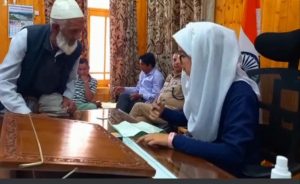
The initiative is a part of the movement the district administration has started to engage youth and realize their potential.
- Under the initiative, ‘Be a Deputy Commissioner for a day‘, higher secondary level students are encouraged to get involved in administrative matters.
- This will motivate them to take up civil services in south Kashmir’s most militancy-affected district of Pulwama
- Understand youth’s concern and engage them on a plethora of issues that affect them.
- Help in changing the behavioral pattern of the dejected youth and students anxious about their careers
- Motivating them to become social change agents.
- Help develop administration civic interaction, thus building trust.
National Culture Fund:
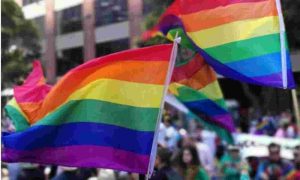
Since inception, NCF has completed 52 projects with various donors.
- Government of India has set up National Culture Fund (NCF) as a Trust on 28th November, 1996 under the Charitable Endowment Act, 1890.
- NCF is managed by a (Governing) Council and an Executive Committee.
- The Council is chaired by the Union Minister of Culture and has a strength of 21 including 15 non-official members representing various fields including corporate sector, private foundations and not-for-profit voluntary organizations.
- The aim of National Culture Fund (NCF) is to establish and nurture partnerships in the field of Culture and Heritage with private and public sectors, government, non-government agencies, private institutions and foundations and mobilize resources for the restoration, conservation, protection and development of India’s rich, natural, tangible and intangible heritage.
Nasha Mukt Bharat Abhiyaan:

The Ministry of Social Justice and Empowerment has launched ‘Nasha Mukt Bharat Abhiyaan’ in 272 most vulnerable districts since August 2020 to address the problem of Drug Abuse among youth of India.
- The Minister of State for Social Justice and Empowerment said, there has been a change in the pattern of substance abuse as reflected in the National survey of Extent, Pattern and Trends of Substance Use done in 2004 and in the Comprehensive National Survey on Extent and Pattern of Substance Use in India conducted in 2018.
- He said, under ‘Nasha Mukt Bharat Abhiyaan’, special emphasis is laid on the participation of stakeholders such as women, children, educational institutions and civil society organizations.
GOAL 2.0:

Ministry of Tribal Affairs and Meta (formerly Facebook) have launched the second phase of the GOAL Programme (GOAL 2.0).
- GOAL (Going Online as Leaders) was launched as a pilot project in May 2020 and it was completed by December 2021.
- It aimed at digital empowerment of tribal youth and women through the concept of mentor and mentee.
- The programme is fully funded by Meta (Facebook India).
- Trainings were provided for three pillars:
- Communication & Life Skills
- Enabling Digital Presence
- Leadership & Entrepreneurship
GOAL 2.0:
- Goal 2.0 program will be open to all people from tribal communities.
- In Phase-I, the digital mentorship was provided online by attaching one mentor to 2 mentees.
- The program aims to upskill and digitally enable tribal youth via Facebook live sessions and Meta Business Coach, a digital learning tool.
- There will be special focus on more than 10 lakh members of 50000 Vandhan Self Help Groups.
- They will be digitally trained with regard to market demand, packaging, branding and marketing of their products.
- The GOAL 2 will enable maximum participation and percolation of benefits of the training within the tribal youth with provision of Chatbot, need based on line sessions from Industry experts in different fields as per requirements from the mentees.
- The Ministry of Tribal Affairs in coordination with the Ministry of Electronics and Information Technology, will be providing 6 digital classes in each of the 175 Eklavya Model Residential Schools (EMRS) selected under the program.
- The project is being implemented by The Education and Research Network, which is an autonomous organization under the Ministry of Electronics and Information Technology (MeITY).




